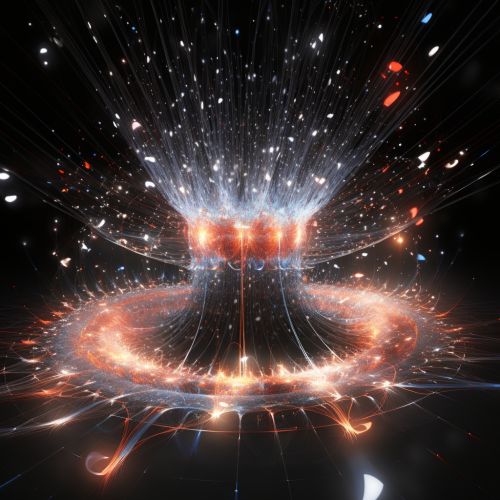Supersymmetry
Introduction
Supersymmetry is a principle in particle physics that proposes a relationship between two basic classes of particles: bosons and fermions. The theory suggests that for every type of boson, there is a corresponding type of fermion, and vice versa. This symmetry is not observed in nature, leading to the concept of broken supersymmetry.


Background
The concept of supersymmetry was first proposed in the early 1970s by physicists Yuri Golfand and Evgeny Likhtman. It was further developed by a number of other scientists, including Julius Wess and Bruno Zumino, who formulated the Wess–Zumino model, a four-dimensional model of supersymmetry.
Theoretical Framework
Supersymmetry is part of the theoretical framework of quantum field theory, which describes the fundamental forces of nature, excluding gravity. It is also a key component of string theory, a theoretical framework in which the point-like particles of particle physics are replaced by one-dimensional objects called strings.
Supersymmetric Particles
In the supersymmetry theory, every particle has a supersymmetric partner that differs by half a unit of spin. These partners are known as superpartners. For instance, the superpartner of a fermion is a boson and vice versa. However, these superpartners have not been observed in nature, which leads to the concept of broken supersymmetry.
Broken Supersymmetry
Broken supersymmetry suggests that the superpartners of the known particles are much heavier than their counterparts, which is why they have not been observed in experiments. This concept is important in the hierarchy problem in particle physics, which is the question of why the weak force is much stronger than gravity.
Supersymmetry and the Standard Model
The Standard Model of particle physics does not include supersymmetry. However, supersymmetry can be incorporated into the Standard Model, resulting in the Minimal Supersymmetric Standard Model (MSSM). The MSSM predicts the existence of superpartners for all the particles in the Standard Model.
Experimental Searches
Experimental searches for supersymmetric particles have been conducted at particle accelerators, including the Large Hadron Collider (LHC) at CERN. However, as of now, no evidence for supersymmetry has been found.
Implications for Cosmology
Supersymmetry has important implications for cosmology. It can provide a candidate for dark matter, a mysterious substance that makes up about 27% of the universe. The lightest supersymmetric particle, which is stable and neutral, could be a component of dark matter.
